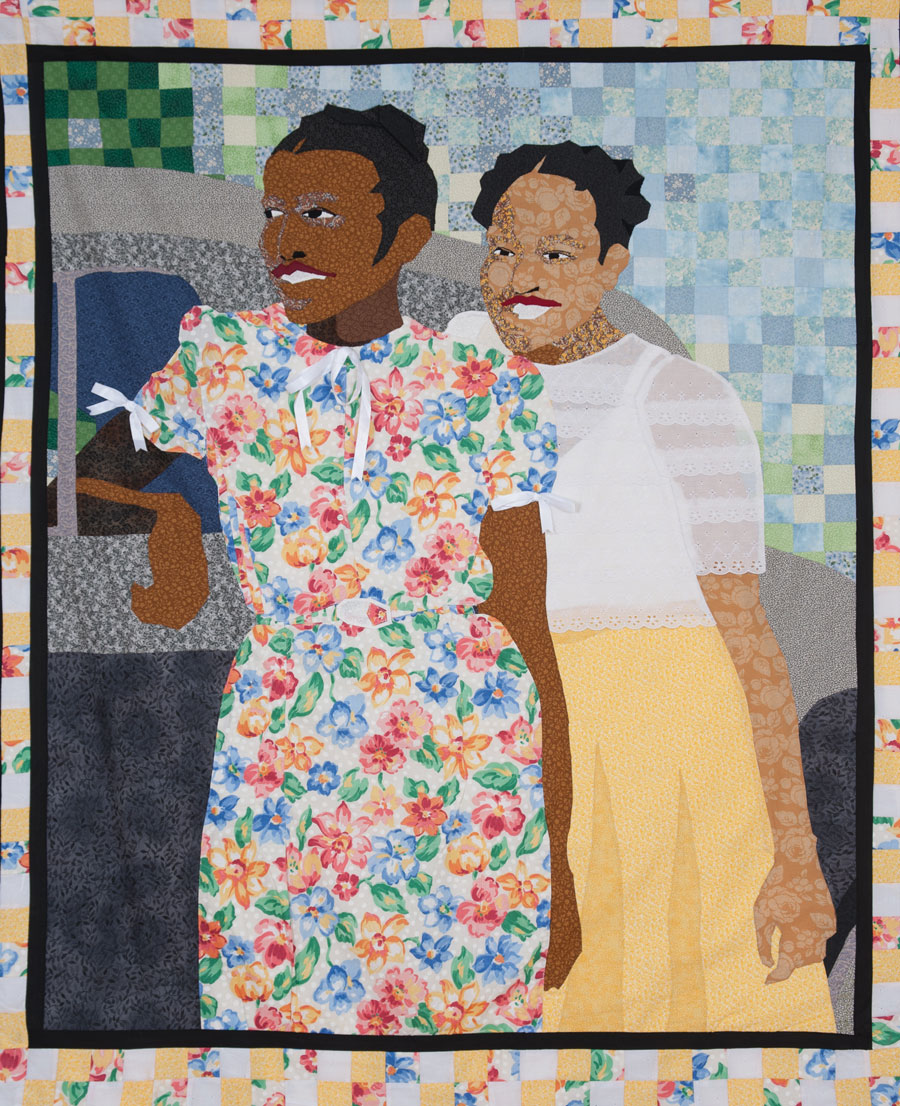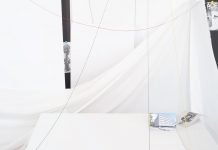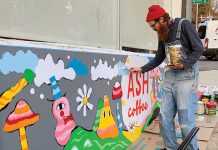
Courtesy of the artist and Fort Gansevoort, New York
Dawn Williams Boyd, 69, grew up in a house where something was always being sewn. Her grandmother wielded needle and thread for everything from the clothes her family wore to the curtains on their windows and the covers on their furniture. Boyd’s mother made the children’s school clothes, and Boyd herself dressed dolls with fabric scraps.
As an adult, Boyd first turned her artistic talent to oils on canvas and acrylic on just about any surface, but eventually returned to her matrilineal craft, making quilts that she calls “cloth paintings.”
Last summer, the Metropolitan Museum of Art in New York added the Atlanta artist’s Sankofa piece to its permanent collection; and, this summer, her solo exhibit at New York’s Fort Gansevoort art gallery will cover an ambitious slate of themes ranging from police violence and women’s rights to climate change.
Here, Boyd gives a stitch-by-stitch explanation of her Peaches and Evangeline cloth painting (completed in 2004 and part of her Woe exhibit at the University of Georgia’s Lupin Foundation Gallery), which she pieced by machine and also appliquéd, embroidered, and quilted by hand.
“There are four elements in Peaches and Evangeline which give clues to its age and its place in my development of this medium: the atmospheric, watercolor-ish, pieced background; the patchworked border, which is made of the same fabrics featured in the body of the piece; the fabric shadows on the faces; and the fact that the teeth and lips are made of fabric. All four elements were vestiges of my early thinking of these fabric works as quilts versus cloth paintings. They all proved to be too time- and energy-consuming, and Peaches and Evangeline is the last time these elements are used in this way.”

Courtesy of the artist and Fort Gansevoort, New York
Peaches and Evangeline is a great example of the fabric inspiring the piece. Both the flowered dress and the all-lace top recalled the fashions of the late 1940s. I especially enjoyed the transparency of the lace top. You can see both the bra and the slip straps. I believe this is the first time I used a transparent fabric over an opaque piece.’
“The image is based on a black-and-white photo taken of Annie Rosalea (called Peaches) and Juanita Evangeline Moore by their father, Harry Tyson Moore, an educator and early civil rights advocate, in 1942. On Christmas night, 1951, Harry and his wife, Harriette, were assassinated when dynamite was exploded under their bedroom floor [in Bibb County, Florida].”
“They should not be wearing red lipstick. Teenaged girls of that era would not have been allowed to wear lipstick of any color. The lip color is a late addition [to help clarify the gender of the subjects].”
“Peaches and Evangeline was the fifth cloth painting added to my Sins of the Fathers series, which consists of over 20 pieces in various mediums that discuss the myriad incidences of racial violence perpetrated against Black citizens throughout American history. Though the assumption was that the Klan was responsible for the murder of the Moores, and though the FBI investigated multiple times, no one was ever prosecuted.”
This article appears in our February 2022 issue.














